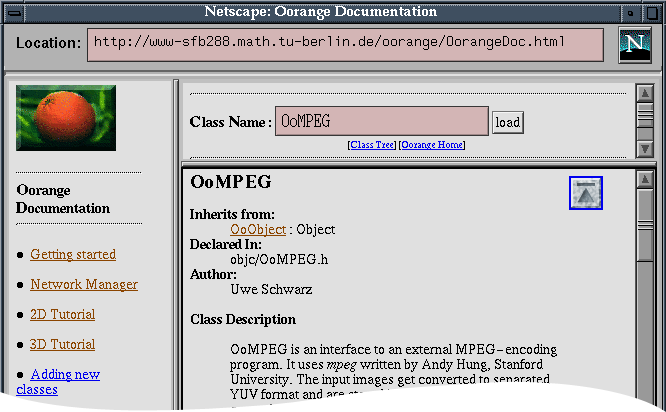 Next: Special Tools
Next: Special Tools
Up: Components of the Virtual Laboratory
Previous: Archiving
Clear and ubiquitous documentation is central to the Oorange philosophy. To
begin with, all Oorange documentation exists in HTML format, and is directly
accessible from within Oorange. There are several levels of documentation
available:
- Tutorials: There are currently nine tutorials describing various aspects
of the Oorange system. These are intended for new users and cover the topics of
overview, network editor, the Tcl/Objective C connection, 3D viewing, 2D
viewing, animation, inspection, datagrids and functions, and adding new classes to Oorange.
These can be loaded from Oorange into an HTML browser.
- Class documentation: Oorange provides a documentation extraction
system ``Objective-Doc'' [12], which acts on
class interface files and source files to generate LaTeX or HTML files containing
documentation including the following features:
- automatic generation of class hierarchy above this class with links
- class description
- class and instance method names
- instance variables
- insertion of links to other classes or methods
Protocols and categories are handled similarly. The resulting documents are available
through a Web-based class browser (Figure 4).
- Node documentation: annotate methods (analogous to the
nodeUpdate method) can be attached to any node script to provide node customized
documentation for the node. This can be as simple as a character string to be displayed
above the node icon, or an arbitrary HTML document can be loaded into the browser of your
choice.
- Search capability: The Web-based documentation is equipped with a general
search capability.

Copyright © 1997 Sonderforschungsbereich 288, Differential
Geometry and Quantum Physics, TU-Berlin
![]() Next: Special Tools
Next: Special Tools